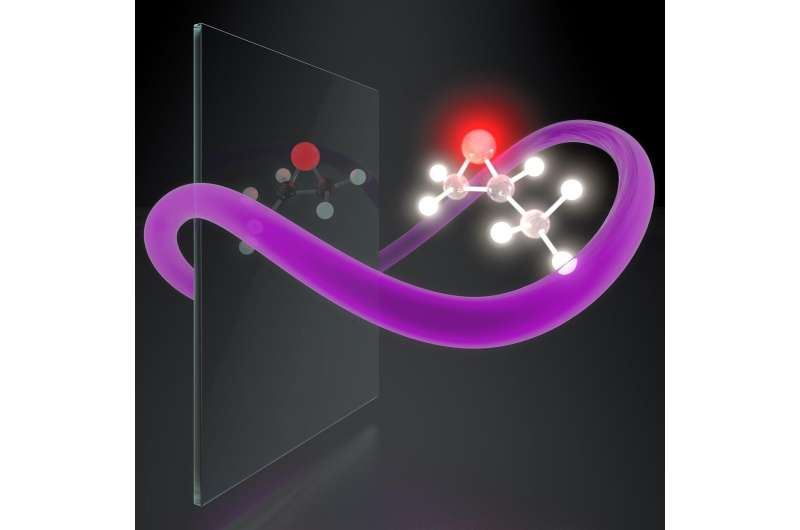Scientists synthesize light with new intrinsic chirality to tell mirror molecules apart

Light is the fastest way to distinguish right- and left-handed chiral molecules, which has important applications in chemistry and biology. However, ordinary light only weakly senses molecular handedness. Researchers from the Max Born Institute for Nonlinear Optics and Short Pulse Spectroscopy (MBI), the Israel Institute of Technology (Technion) and Technische Universitaet Berlin (TU Berlin) now report a method to generate and characterize synthetic chiral light, which identifies molecules' handedness exceptionally distinctly. The results of their joint work have just appeared in Nature Photonics.
Like left and right hands, some molecules in nature have mirror twins. However, while these twin molecules may look similar, some of their properties can be very different. For instance, the handedness—or chirality—of molecules plays an essential role in chemistry, biology, and drug development. While one type of a molecule can cure a disease, its mirror twin—or enantiomer—may be toxic or even lethal.
It is extremely hard to tell opposite chiral molecules apart because they look identical and behave identically unless they interact with another chiral object. Light has long been used to detect chirality—oscillations of the electromagnetic field draw a chiral helix in space along the light propagation direction. Depending on whether the helix twirls clockwise or counterclockwise, the light wave is either right- or left-handed. However, the helix pitch, set by the light wavelength, is about 1000 times bigger than the size of a molecule. So the light helix is a gigantic circle compared to the tiny molecules, which hardly react to its chirality.
An innovative way around this problem proposed by MBI, Technion and TU Berlin scientists, is to synthesize a new type of chiral light that draws a chiral structure in time at every single point in space. "The handedness of this new light can be tuned in such a way that one enantiomer will actively interact with it and emit bright light in response, while the opposite enantiomer will not interact with it at all," explains Dr. David Ayuso, MBI researcher and the first author of the article.
The scientists described this new chiral light mathematically and tested their model by simulating how it interacts with chiral molecules. Furthermore, they showed how to create such light in a lab, fusing two converging laser beams that carry light waves of two different frequencies. By tuning the phase shift between the different frequencies, scientists can control the handedness of this synthetic chiral light and thus select the type of molecule with which it will strongly interact.
"Synthetic chiral light is described by completely new intrinsic symmetry properties for electromagnetic fields, which is very exciting," says Ofer Neufeld, a Ph.D. student in the Technion's Â鶹ÒùÔºics Department, second (equal contribution) author of the paper.
The researchers foresee a variety of potential applications of the new method in chemistry and biology. For example, synthetic chiral light could allow researchers to monitor chiral chemical reactions in real time or detect the switch in the molecules' handedness. "We also hope to use this new approach to separate molecules spatially with the opposite handedness using ultrafast lasers," says Prof. Dr. Olga Smirnova, professor at the TU Berlin and head of an MBI Theory group.
More information: Synthetic chiral light for efficient control of chiral light–matter interaction, Nature Photonics (2019). ,
Journal information: Nature Photonics
Provided by Forschungsverbund Berlin e.V. (FVB)



















